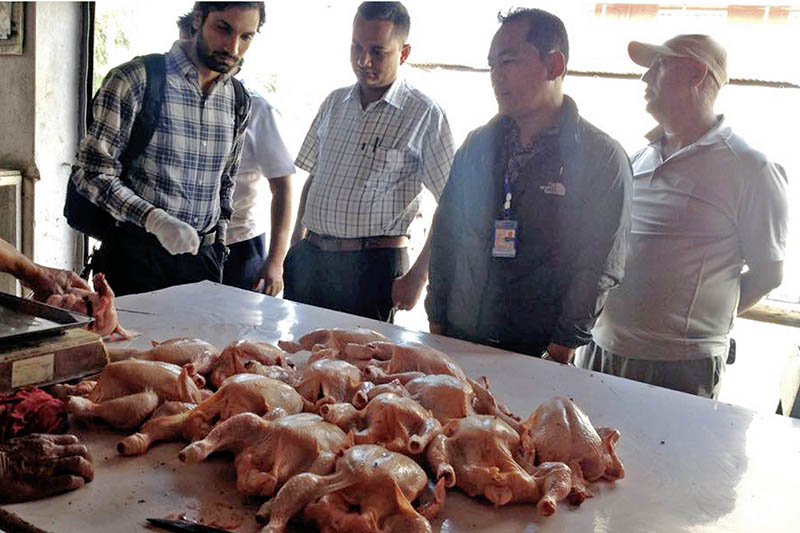Meat production fails to keep pace with demand
Kathmandu, January 11
As the consumption of meat has been growing rapidly among the urban population, the country has been importing processed meat, live animals and frozen meat from different countries, especially from India and Tibet. Subsequently, Nepal's import bill for meat and live animals has been increasing along with the rising demand of meat.
The growing number of hotels and restaurants in urban and semi-urban areas has played a catalytic role in increasing the consumption of meat. Though demand of meat is increasing rapidly, production has not been able to keep pace with it.
Against this backdrop, the government accepted around Rs 8.24 billion assistance from the World Bank Group last month to promote innovation in livestock farming, including production of meat. The Ministry of Livestock Development (MoLD) has been framing a policy to substitute the import of meat, under which the government is preparing to promote cooperatives for livestock farming and the private sector for meat processing and market development.
The government will support the cooperatives through extension services, insurance schemes, innovate techniques for breeding and concessional loan facility to promote livestock farming, according to MoLD officials.
Keshav Prasad Premy, director general of the Department of Livestock Services, said that implementation of the policy will make the country self-reliant in meat.
Currently, Kathmandu Valley is the largest consumer of meat. Per capita meat consumption or per person per annum meat consumption in Kathmandu is 16 kg, as per Premy. However, nutrition requirement is 17 kg per capita per annum. Per capita consumption of meat in developed countries is around 25 kg.
Premy said that consumption of meat could increase further as the middle-income population is growing in the country.
In recent years, demand of goat meat has been rising exponentially, according to Neena Joshi, programme director at Heifer International Nepal, an organisation working in livestock development since the last two decades.
“Goat meat is more nutrient and somehow a higher-end product among meat products and the consumption of goat meat has risen in recent years,” she said. “As a result, despite increased production base, the country is importing larger quantity of chilled or frozen goat meat and live goats.”
Share of goat meat in total meat production is 20 per cent and it contributes 12 per cent to the total livestock agriculture domestic product.
Currently, annual demand of goats is four million and the country imports around 500,000 to 700,000 goats every year to meet the demand.
Experts have suggested the government to encourage smallholder farmers in goat farming, which will simultaneously raise the income level of low-income groups and make the country self-reliant in meat products.






